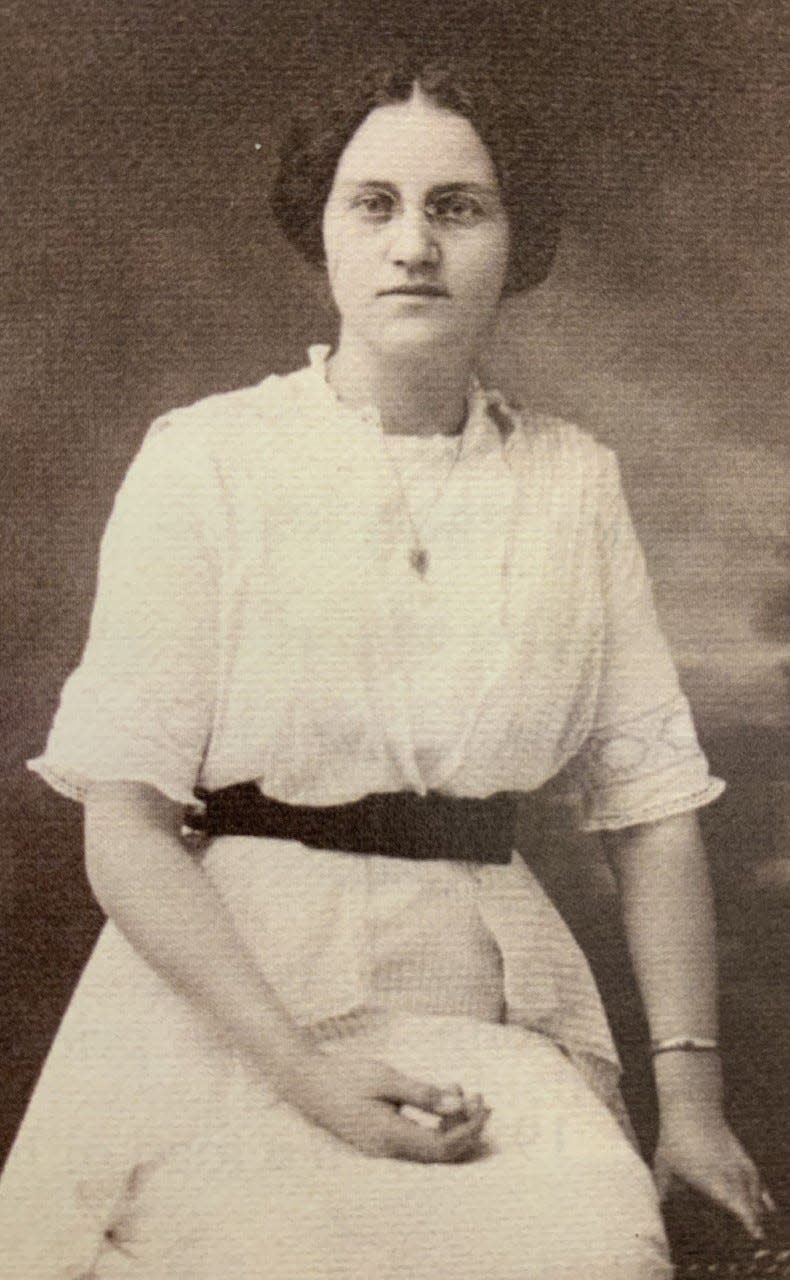Steve VanderVeen: The foundation of Holland's same-name trucking company
John and Katherine Cooper, like Russ and Julia Bouws, had a farmers’ work ethic.
John Cooper was the son of Jacob and Ida Post Cooper. Both Jacob and Ida emigrated from the Netherlands with their parents in 1879, to Tallmadge Township. John was born in 1893. After completing the fifth grade, he quit school to work on his father’s farm.
John married Katherine Fuller. She was a descendent of the Cones, who'd emigrated to America and settled in Haddam, Connecticut, in 1662. John and Katherine lived near each other and went to the same school. Their relationship blossomed when John asked Katherine if he could walk her home from a house party in 1916.
They married in March 1917. After traveling to Niagara Falls for their honeymoon, they returned to Michigan and rented a farm. Their son, Charles, was born in December.

When John’s brother, Harry, returned from World War I, he joined John on the farm. Unfortunately, at harvest time, when they were unloading hay with giant forks connected to ropes and pulleys — which they attached to the beams in the barn and a horse — one of the hayforks broke loose and pierced Harry. He died the next day. From that point on, John questioned if farming was his vocation.
In August 1919, John and Katherine’s son, Robert, was born.
In 1924, the Cooper family moved to Marne, where John bought his first truck to haul farm commodities for his neighbors. He hauled wheat from the threshing floor to the flour mill, baled hay and straw, loads of potatoes, even cows. He also hauled household goods. Then, he began hauling farm products and freight to and from the Grand Rapids depot of the Pere Marquette Railroad.
In the late 1920s, John hauled gravel for the construction of M-21 between Grand Rapids and Holland; he also hauled freight to and from Chicago for another trucking concern, Grand Rapids Motor Express.
Then he met a man who wanted him to haul pulp-wood in the Upper Peninsula between the forest near Trout Lake and boxcars in Rexford, so the railroad could ship the wood to the Muskegon Paper Company. So, in 1928, in Cadillac, on his way to the Upper Peninsula, John traded in his old truck for two new ones, so he and his brother Merle could do the job.
He took Katherine, Charles and Robert along. That summer, the family lived in a tent. To help them, John and Merle hired a Native American, Josh Brady.
In 1929, John moved his business to Holland, thinking he could haul products between Grand Rapids and Chicago. But at first, John wasn't able to find customers. Then he found a shipper with a load of fruit, and slowly sales, but not profits, began to grow.
John served as the Chicago branch manager. Charles Lautenbach, a third partner, served as the Holland manager. Because the interstate did not yet exist, the drive was full of “square corners,” meaning a one-way trip took 10 hours. As John was the only driver, he got little sleep.
Subscribe:Get all your breaking news and unlimited access to our local coverage
In Holland, the partnership rented a small room in a former cannery on the northwest corner of Fifth Street and Central Avenue. Katherine did the bookkeeping, using an old kitchen table for a desk. But when, in 1929, the stock market crashed and the Great Depression set in, there was little freight to haul, and the business lost its two trucks to a finance company.
Undaunted, John and Katherine found rigs to hire, then a truck and trailer to lease.
In those days, trucks didn't have sleepers. To save money, John rented a room in Chicago with a competitor from Grand Rapids. But that room had only one bed. So, when John and the other driver were both in Chicago at the same time, the room was uncomfortably crowded.

Back in Holland, during the winter months, there was no heat in the office; so, Katherine filled a cardboard box with straw and placed her feet inside to keep warm. At first, she did her paperwork in pencil, until a shipper wondered why the company didn't use a typewriter. Katherine found one to rent.
The business got a break when Hart and Cooley became its first regular customer.
More on that next week.
— Community Columnist Steve VanderVeen is a resident of Holland. Contact him through start-upacademeinc.com.
This article originally appeared on The Holland Sentinel: Holland History: The foundation of Holland's same-name trucking company

